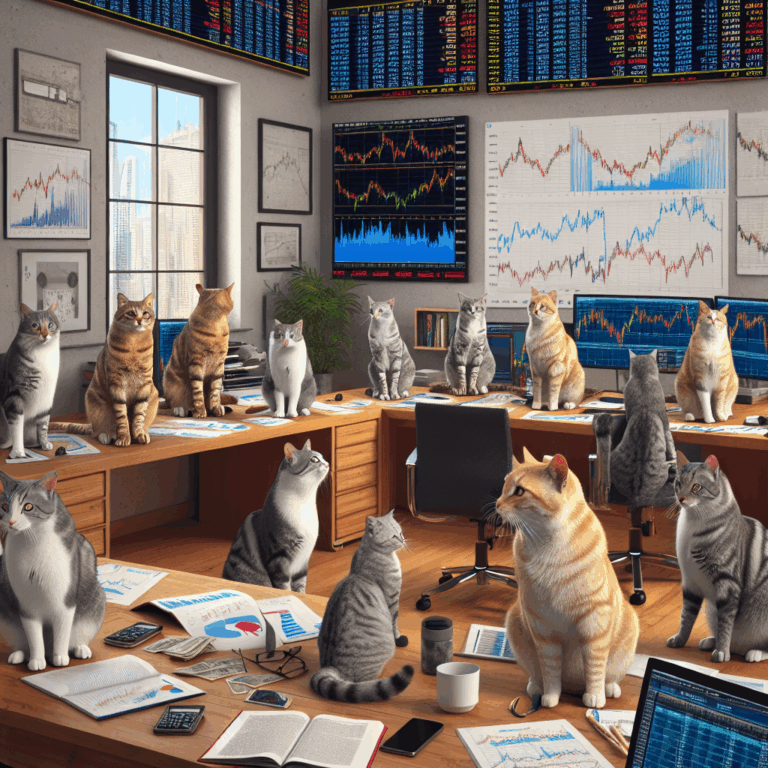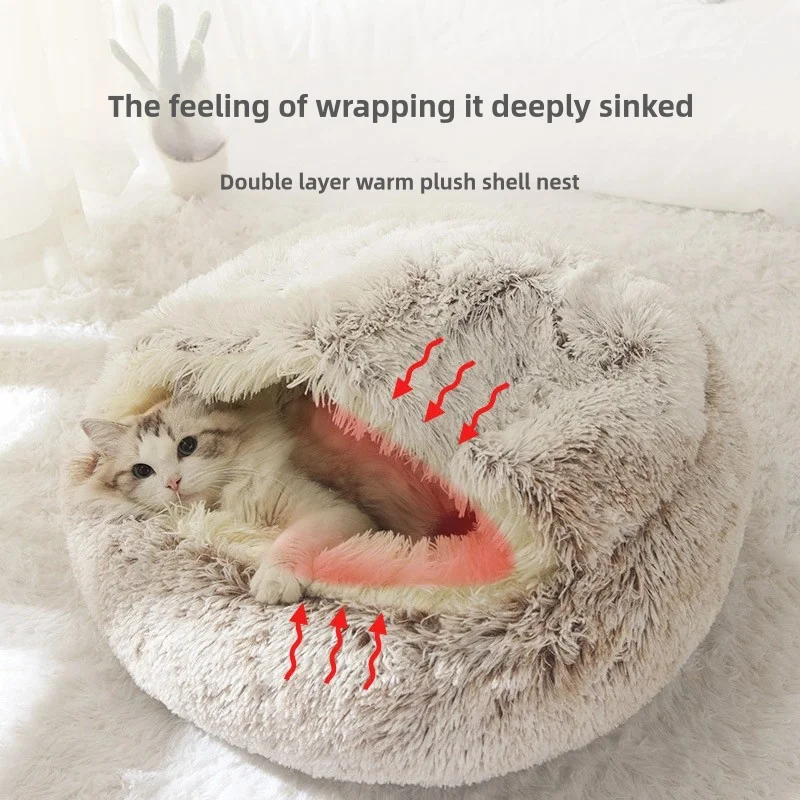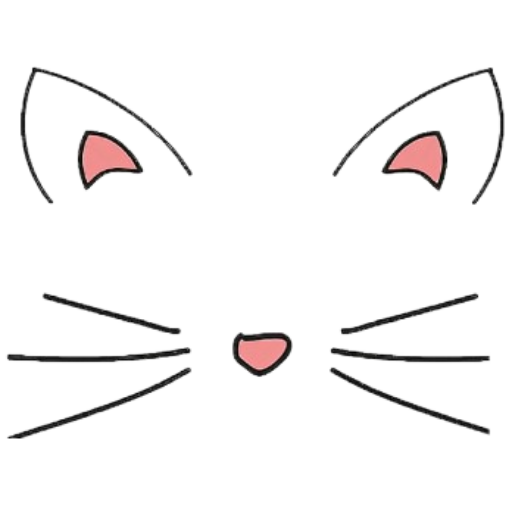The Feline Economists: Cats and Their Influence on Financial Trends
- 5 Comments
In a world where markets fluctuate and economies transform with the blink of an eye, it might seem outlandish to consider cats as influential players in the financial sphere. However, a closer examination reveals that these furry companions have left their paw prints on various aspects of economic trends, often in subtle yet profound ways.
To begin with, cats have become symbols of wealth and prosperity in numerous cultures throughout history. In ancient Egypt, cats were revered as sacred creatures, often depicted alongside deities associated with wealth. This historical association has trickled into modern symbolism, influencing consumer behavior patterns. For instance, the “Maneki-neko” or “beckoning cat” is a common talisman in Asian markets, believed to bring good fortune and attract customers to businesses. This iconography has had a tangible effect on consumer confidence and spending in certain markets, demonstrating the enduring economic impact of feline imagery.
Beyond symbolism, cats have also played a direct role in shaping specific industries. The pet industry, for instance, has experienced unprecedented growth, with cats at the forefront. According to recent market analysis, the global pet care market is projected to reach over $350 billion by 2027, with feline products and services accounting for a significant portion of that growth. The demand for premium cat food, grooming services, and feline-specific technologies has spurred innovation and investment, driving economic activity and creating jobs.
Moreover, cats have indirectly influenced real estate trends. The rise of remote work and digital nomadism during the COVID-19 pandemic saw many individuals seeking pet-friendly accommodations, with cats as a primary consideration for renters and buyers alike. This shift prompted landlords and property developers to adapt their offerings, resulting in a surge of pet-friendly housing options. In urban environments, developers have even begun incorporating features like catios and feline-friendly architecture into their designs, recognizing the economic value of appealing to cat-loving tenants.
Cats have also become central figures in the burgeoning gig economy. Platforms dedicated to pet sitting, such as Rover and Meowtel, have thrived, offering flexible employment opportunities for individuals passionate about feline care. These platforms have not only contributed to the economy by creating new income streams but have also fostered communities centered around shared interests and services.
Additionally, the influence of cats extends to the world of finance through the viral phenomenon of “catvertising.” Businesses have capitalized on the internet’s fascination with cats, using them as marketing tools to increase brand visibility and engagement. Viral cat videos and memes have shaped advertising strategies, with companies leveraging the universal appeal of cats to reach diverse audiences. This trend has not only boosted brand recognition but also impacted financial outcomes, as companies report increased sales following successful cat-centric campaigns.
In conclusion, while cats may not wield direct control over stock markets or economic policies, their influence on financial trends is undeniable. From their symbolic significance to their role in driving industry innovation and consumer behavior, cats have become key players in the economic landscape. As businesses and individuals continue to recognize and harness the economic potential of these enigmatic creatures, one thing is certain: the financial world will remain under the watchful gaze of its feline economists.

In a world where markets fluctuate and economies transform with the blink of an eye, it might seem outlandish to consider cats as influential players in the financial sphere. However, a closer examination reveals that these furry companions have left their paw prints on various aspects of economic trends, often in subtle yet profound ways.
To begin with, cats have become symbols of wealth and prosperity in numerous cultures throughout history. In ancient Egypt, cats were revered as sacred creatures, often depicted alongside deities associated with wealth. This historical association has trickled into modern symbolism, influencing consumer behavior patterns. For instance, the “Maneki-neko” or “beckoning cat” is a common talisman in Asian markets, believed to bring good fortune and attract customers to businesses. This iconography has had a tangible effect on consumer confidence and spending in certain markets, demonstrating the enduring economic impact of feline imagery.
Beyond symbolism, cats have also played a direct role in shaping specific industries. The pet industry, for instance, has experienced unprecedented growth, with cats at the forefront. According to recent market analysis, the global pet care market is projected to reach over $350 billion by 2027, with feline products and services accounting for a significant portion of that growth. The demand for premium cat food, grooming services, and feline-specific technologies has spurred innovation and investment, driving economic activity and creating jobs.
Moreover, cats have indirectly influenced real estate trends. The rise of remote work and digital nomadism during the COVID-19 pandemic saw many individuals seeking pet-friendly accommodations, with cats as a primary consideration for renters and buyers alike. This shift prompted landlords and property developers to adapt their offerings, resulting in a surge of pet-friendly housing options. In urban environments, developers have even begun incorporating features like catios and feline-friendly architecture into their designs, recognizing the economic value of appealing to cat-loving tenants.
Cats have also become central figures in the burgeoning gig economy. Platforms dedicated to pet sitting, such as Rover and Meowtel, have thrived, offering flexible employment opportunities for individuals passionate about feline care. These platforms have not only contributed to the economy by creating new income streams but have also fostered communities centered around shared interests and services.
Additionally, the influence of cats extends to the world of finance through the viral phenomenon of “catvertising.” Businesses have capitalized on the internet’s fascination with cats, using them as marketing tools to increase brand visibility and engagement. Viral cat videos and memes have shaped advertising strategies, with companies leveraging the universal appeal of cats to reach diverse audiences. This trend has not only boosted brand recognition but also impacted financial outcomes, as companies report increased sales following successful cat-centric campaigns.
In conclusion, while cats may not wield direct control over stock markets or economic policies, their influence on financial trends is undeniable. From their symbolic significance to their role in driving industry innovation and consumer behavior, cats have become key players in the economic landscape. As businesses and individuals continue to recognize and harness the economic potential of these enigmatic creatures, one thing is certain: the financial world will remain under the watchful gaze of its feline economists.



5 thoughts on “The Feline Economists: Cats and Their Influence on Financial Trends”
This article provides an insightful look into the fascinating ways cats impact various economic aspects.
It’s great to hear that you found the exploration of cats’ influence on economics fascinating. Their impact on different industries and consumer behaviors is indeed quite intriguing!
Absolutely, it’s interesting to see how cats have woven their way into various economic aspects and influenced consumer trends!
It’s fascinating, indeed! Cats have certainly made their mark across different sectors, shaping trends and consumer behaviors in unexpected ways. Their impact is both intriguing and significant.
Absolutely, it’s remarkable to see how cats influence various industries and trends. Their presence in our lives continues to surprise and inspire in unexpected ways.